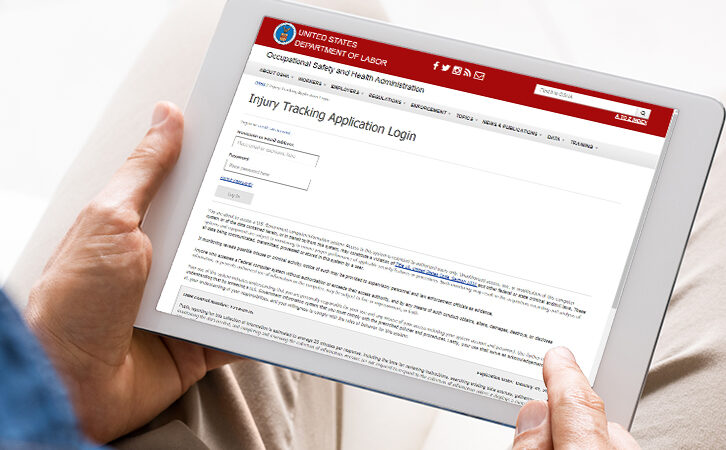Many Workplaces Haven’t Electronically Filed Their Recordkeeping Forms to OSHA
03/20/2018

OSHA is reporting that nearly 200,000 workplaces who were required to electronically submit data from their Form 300A via the Injury Tracking Application (ITA) did not submit their data by the December 2017 deadline.
Under OSHA’s Electronic Reporting Rule, establishments with 250 or more employees that are currently required to keep injury and illness records under the OSHA Recordkeeping Standard, as well as establishments with 20-249 employees that are also covered by the OSHA Recordkeeping Standard and operating in certain industries with historically high rates of occupational injuries and illnesses, are now required to annually submit that data electronically. The first deadline for the reporting year 2016 OSHA 300A forms (Summary of Work-Related Injuries and Illnesses) was December 15, 2017. OSHA stated that it would not take enforcement actions against employers who submitted their reports after the December 15, 2017 deadline but before December 31, 2017, which effectively extended the deadline.
In figures provided to Bloomberg Environment, OSHA reports that it expected about 350,000 employers to file by the end of 2017, but that only 153,653 were submitted. Additionally, OSHA states that another 60,992 forms were turned in by workplaces that weren’t required to submit their data.
Both of these discrepancies suggest confusion among those in the industry – both covered by the standard and not required to submit data – about this new reporting practice. The need to comply with OSHA’s Electronic Recordkeeping Rule is more important than ever following the agency’s recent penalty increase due to inflation. Failure to submit reports could lead to Other Than Serious violations for workplaces and result in potential fines of up to $12,934.
The next reporting deadline is already approaching. By the next due date, currently set at July 1, 2018, covered establishments with 250 or more employees will need to not only submit electronic information from the 300A, but 301 and 300 forms, as well, while covered establishments with 20 to 249 employees will still need to submit electronic information from the 300A.
To help companies and EHS professionals further understand the electronic recordkeeping changes and their compliance obligations under it, VelocityEHS has created a variety of free educational resources aimed at clearing up any confusion around the new reporting requirements.
- Our OSHA ITA Cheat Sheet offers a complete overview of key requirements and submission deadlines, along with important information to help guide you through the ITA submission process and keep you in compliance.
- Want a more detailed explanation of how to use OSHA’s new ITA system? Listen to our On-Demand Webinar for a better understanding of the ITA submission process and how to edit data once it’s entered.
- Finally, the OSHA Recordkeeping Infographic helps simplify the process of determining which workplace incidents are OSHA recordable or reportable.
Let VelocityEHS Help!
While OSHA does not require employers to adopt an electronic system to record occupational injuries and illnesses, EHS management software with the ability to export data in a standard CSV file format that meets the agency’s specifications can significantly streamline the electronic submission process. The VelocityEHS Incident Management solution makes it easy for employers and employees to more accurately record workplace incidents, near-misses and hazards of all types, and automatically generate your OSHA forms 300, 300A, and 301. Our solution even allows users to generate properly formatted injury and illness summary reports for instant electronic submission to the ITA.
Furthermore, the simple-to-use VelocityEHS Mobile App allows workers to instantly report incidents, near misses and hazards as they occur – with or without internet connectivity – via a smartphone or tablet device. With a more robust system in place, employers can rest assured knowing the information being submitted is accurate and being correctly submitted to the ITA.
With VelocityEHS, you can take the anxiety out of compliance with OSHA’s electronic reporting rule and have the tools you need to improve your incident management performance.






